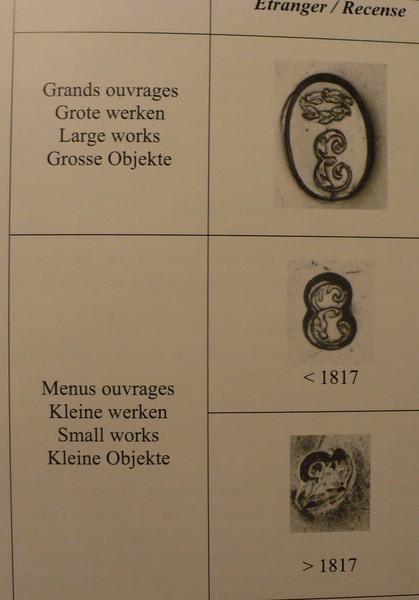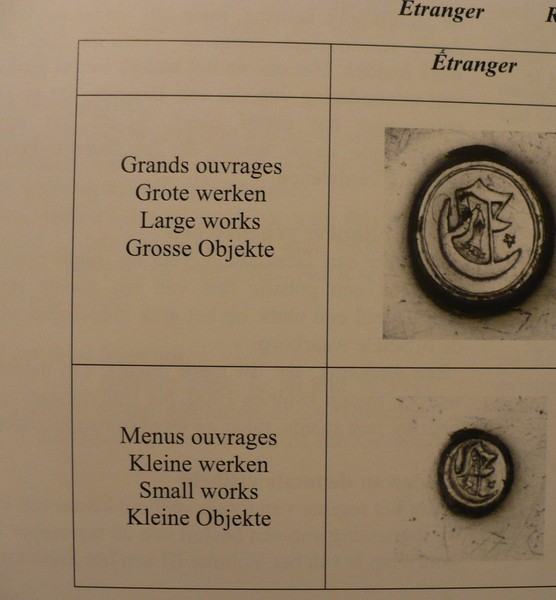Belgian fork from Liege 1780
Posted: Thu May 22, 2014 9:28 am
It was not mandatory to the silver that was in private possession, to approve it again ?
I see these cases, mainly in Wallonia.
What is the reason behind this?
Whether this was done in protest to the transition from the guild marks, France or Belgium Kingdom.
This I do not see this very often in Flanders. (floral V)
http://www.925-1000.com/forum/viewtopic.php?f=8&t=37042
Liège, punch reign of François-Charles de Velbruck, double-headed eagle with the 1772 vintage
letter I for 1780
Makers mark crown above GH - GEORGES-LOUIS-SÉBASTIEN HENROTAY
Also, two import duty and marks from 1814 -1843 and 1832-1868 (kingdom of Belgium)
These Marks were destined for all imported, unmarked and invalided marked objects of foreign, national and unknown origin.
During the 1814 and 1815 transition period these Marks were also struck on new object which still had been made to the French 800 silver standard of fineness
It is incomprehensible that their own city marks as foreign brands labeled and mutilated, even after 35 years and 52 years. (after date 1780)
In any case, a nice piece of history
Best Regards
Dendriet

I see these cases, mainly in Wallonia.
What is the reason behind this?
Whether this was done in protest to the transition from the guild marks, France or Belgium Kingdom.
This I do not see this very often in Flanders. (floral V)
http://www.925-1000.com/forum/viewtopic.php?f=8&t=37042
Liège, punch reign of François-Charles de Velbruck, double-headed eagle with the 1772 vintage
letter I for 1780
Makers mark crown above GH - GEORGES-LOUIS-SÉBASTIEN HENROTAY
Also, two import duty and marks from 1814 -1843 and 1832-1868 (kingdom of Belgium)
These Marks were destined for all imported, unmarked and invalided marked objects of foreign, national and unknown origin.
During the 1814 and 1815 transition period these Marks were also struck on new object which still had been made to the French 800 silver standard of fineness
It is incomprehensible that their own city marks as foreign brands labeled and mutilated, even after 35 years and 52 years. (after date 1780)
In any case, a nice piece of history
Best Regards
Dendriet


